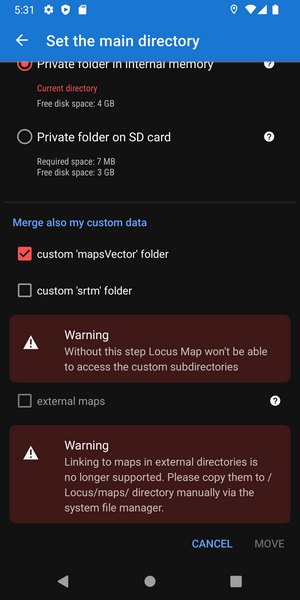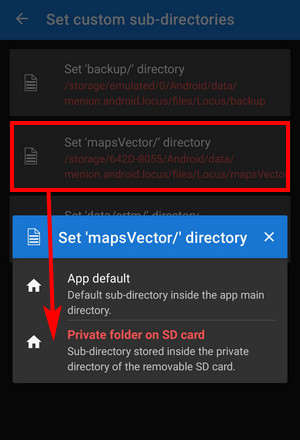Translated from English by gtranslate.io
Sidebar
This is an old revision of the document!
Table of Contents
Transfer of custom subdirectories and external maps
Previously, Locus Map could work with data (maps, SRTM data, geotagged photos…) placed in subdirectories all over the device storage. This is no longer possible due to the recent changes in the Android file system - the custom data have to be transferred to the app private folder.
Vector maps and SRTM data
If you had this data stored in custom sub-directories, Locus Map detects them and offers to merge them into the main app directory during the app data transfer:

After the app data transfer, you can place the sub-directories to the private directory on the removable SD card if you need to save the internal storage space:

What if I refuse?
You lose access to the data via Locus. The data will remain in the device storage though.
Backup sub-directory
The only sub-directory that can be placed out of the main app directory.
External maps
Linking of the maps from external directories is also no longer supported. The external maps can be used only within the default /Locus/Maps/ directory.
Unfortunately, it is not technically possible to include external maps into the automatic transfer of the app data. You have to move the maps to /Locus/Maps/ directory manually via the system file manager.
Surprisingly, some system file managers do not have access to the /Android/data/ directory. In such a case, please use a third-party file manager, e.g. X-plore or Total Commander.
Custom folders with geo-tagged photos
Locus Map on Android 11+ can access only the default system media folder (usually /storage/emulated/0/DCIM/)
If you want to display photos from custom directories on the map, you have to move/copy them to this default media folder via a system file manager.

